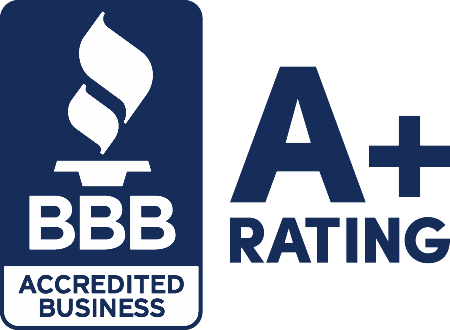What is Revolving Credit?
Revolving credit allows individuals to borrow money up to a specific limit and repay it in full or partially, with interest, on a revolving basis. This means that as you repay the borrowed amount, you can borrow again up to the maximum limit without having to reapply for credit each time.
The key feature of revolving credit is that it does not have a fixed repayment term like installment loans. Instead, borrowers have the flexibility to use the credit line as needed and make payments based on their outstanding balance.
When you use revolving credit, your available credit limit decreases as you borrow money and increases as you make payments. Interest is charged on the outstanding balance, and the minimum payment required each month is usually a percentage of the total balance. Revolving credit can be a convenient option for managing day-to-day expenses or unexpected costs, but it’s essential to use it responsibly to avoid accumulating high debt levels.
Common examples of revolving credit include:
- Credit cards.
- Credit cards with you listed as an authorized user.
- Home equity lines of credit (HELOCs).
- Personal lines of credit.
- Closed revolving credit accounts with an outstanding balance.
What is the Credit Utilization Ratio?
The credit utilization ratio is the amount of revolving credit you’re using compared to your available credit. It’s expressed as a percentage of your total available credit in use. It’s sometimes called the credit usage ratio, credit utilization rate, or credit usage rate.
For example, imagine you have an outstanding balance of $1,000 on a credit card with a $10,000 limit. You’re using 10% of the available credit, meaning the credit utilization ratio is 10%.
How does Credit Utilization affect FICO Scores?
Credit utilization is one of the primary credit score factors in many credit scoring models and comprises 30% of the FICO score. Lower credit utilization helps improve credit or maintain a good credit score, while higher revolving utilization rates can significantly lower a credit score.
This is because a high credit utilization ratio indicates having a high outstanding balance for extended periods. Significant interest accrues while carrying a high balance, further increasing the balance.
As a result, individuals with high revolving credit balances tend to have high minimum payments. This suggests that the amount of credit exceeds the user’s ability to pay off the existing debt, indicating a higher credit risk for lenders and lowering an individual’s credit score.
- Excellent: 800-850
- Very Good: 740-799
- Good: 670-739
- Fair: 580-669
- Poor: 300-579
What is a good Credit Utilization Ratio?
Understanding how lenders and other financial institutions perceive your creditworthiness is essential. Most financial experts agree that consumers should keep credit utilization below 30%.
Here’s a breakdown of how lenders and credit card issuers see credit utilization ratios.
-
Over 75%: Lenders will consider individuals in this range to be at the highest risk.
-
50% – 75%: A credit usage rate over 50% typically indicates a high risk.
-
30% – 50%: Getting credit utilization below 50% starts to look more reasonable to lenders.
-
10% – 30%: As mentioned, a credit utilization rate below 30% is the recommended target number. Lenders typically consider borrowers in this range to be low-risk. The average credit utilization rate for Americans was 30% in 2023, up from 28% in 2022.
-
Under 10%: An ideal credit utilization rate is in the single digits. Individuals with the highest credit score (850) have an average credit utilization rate of 4.1%.
Per data from Experian, here’s the average credit utilization ratio by credit score range:
| Credit Score Range | Average Credit Utilization Ratio |
|---|---|
| 800-850 | 6.5% |
| 740-790 | 14.7% |
| 670-739 | 35.2% |
| 580-669 | 56.1% |
| 300-579 | 82.1% |
What are the advantages of Revolving Credit?
A primary benefit of revolving credit is its flexibility in making purchases and paying off balances over time. Unlike installment loans, revolving credit allows borrowers to make monthly payments based on their budget and financial situation. This can help individuals manage their cash flow more effectively and avoid financial trouble.
Revolving credit can also help improve credit scores by demonstrating responsible borrowing behavior and maintaining a low credit utilization ratio. By building a positive credit history, individuals can access better loan terms and interest rates in the future.
What are the disadvantages of Revolving Credit?
This type of credit typically carries high interest rates, leading to increased debt if the balance is not paid off in full each month. Additionally, the available credit limit can lead to the temptation to overspend.
The minimum payment trap can also be problematic, with borrowers potentially paying more in interest over time by only making the minimum payment. Carrying a high balance can negatively impact credit scores, and additional fees and penalties can further increase the overall debt burden for borrowers.
Revolving Credit Pros & Cons
Pros:
- Flexibility to borrow up to the set credit limit.
- Ability to make minimum payments if needed.
- Can help build credit history if used responsibly.
Cons:
- High interest rates can lead to increased debt.
- Temptation to overspend beyond means.
- High balances and missed payments can negatively impact credit scores.
How do you calculate the Revolving Credit Utilization Ratio?
To calculate your credit utilization ratio, first, add up all your revolving credit balances. Next, add up all your credit limits across revolving credit accounts. Then, divide the total balance by the total credit limit and multiply by 100. This will give you the utilization ratio.
Credit Utilization Ratio Calculation Example
Let’s say you have multiple credit cards, each with different credit limits and balances. Here’s how you would calculate your credit usage rate.
| Credit Account | Balance | Credit Limit | Credit Utilization Ratio |
|---|---|---|---|
| Credit Card A | $500 | $5,000 | 10.00% |
| Credit Card B | $370 | $3,500 | 10.71% |
| Credit Card C | $3,100 | $10,000 | 31.00% |
| Credit Card D | $850 | $4000 | 21.25% |
| $4,820 | $22,500 | 21.42% |
How do you improve the Credit Utilization Ratio to raise Credit Scores?
Here are the best ways to lower your credit utilization ratio to improve your FICO score.
Pay Off Outstanding Balances
Paying off outstanding balances is crucial in lowering credit utilization and improving credit scores. Aim to keep your credit utilization ratio below 30% to see a positive impact on your credit score.
Ideally, you would pay off your balances before each statement date to avoid having the balance reported to the credit bureaus. However, this isn’t always possible, so exploring other options to lower your credit usage rate is good.
Request a Credit Limit Increase
A higher credit limit lowers your usage rate. When requesting a credit limit increase, highlight any positive changes in your financial situation, such as increased income or decreased debt.
Emphasize responsible credit card usage and a history of on-time payments to strengthen your case for a higher limit. Additionally, consider mentioning any upcoming significant expenses that may require additional credit availability as a reason for the increase.
Open a New Credit Card
Opening a new credit card can help increase available credit, lowering the credit utilization ratio. Spreading out expenses across multiple cards can also improve credit scores and financial flexibility. Just be sure to manage the new card responsibly to avoid accumulating unnecessary debt.
Become an Authorized User
Becoming an authorized user on someone else’s credit card can help increase your available credit and lower your credit utilization rate, potentially boosting your credit score. However, it’s vital to ensure that the primary cardholder maintains responsible credit habits to avoid any negative impact on your credit profile.
Consider a Balance Transfer Card
Using a balance transfer card can be a smart way to lower credit utilization by transferring high-interest debt to a card with a low or 0% introductory APR. However, to improve your credit score in the long run, managing the card responsibly by making on-time payments and avoiding accruing additional debt is crucial.
Use a Debt Consolidation Loan
A debt consolidation loan allows you to pay off all or some of your outstanding credit card balances, reducing your revolving credit usage. This method essentially converts your revolving credit debt into installment loan debt.
Not only does this significantly lower your revolving credit utilization ratio, but most debt consolidation loans have lower interest rates, leading to significant savings. In addition, these loans have a fixed payment schedule for easier budgeting.
However, it’s crucial to avoid missing loan payments. You should also avoid adding new debt to your credit cards until the loan is paid off.
Avoid Closing Unused Accounts
Closing unused accounts may seem like a good idea, but it can actually increase your overall credit utilization ratio. Keeping these accounts open can benefit your scores.
Monitor Your Credit Utilization
Regularly monitoring your credit utilization ratio is essential. Aim to keep it below 30% to increase the likelihood of improving your FICO scores.
Frequently Asked Questions
Here are the most common questions about managing revolving credit usage for better FICO scores.
How long does it take for a lower Credit Utilization Ratio to Raise Credit Scores?
Lowering the credit utilization ratio is one of the fastest ways to improve a credit score, with results possible in 30 days. Sometimes, it can take up to 90 days or longer for the full impact of a lower credit usage rate on your credit score.
Is Total Credit Utilization or Per-Card Utilization more important?
Both total credit utilization and per-card credit utilization are essential factors to consider when managing your credit. Total credit utilization reflects how much of your available credit you use overall, while per-card credit utilization shows how responsibly you handle individual accounts.
Both ratios should be kept below 30% to maintain a good credit score. High total credit utilization may signal over-reliance on credit, while high per-card utilization on specific cards can also be a red flag. By monitoring and managing both aspects effectively, you can demonstrate responsible credit behavior and improve your creditworthiness.
What other factors influence FICO Credit Scores?
As mentioned, credit utilization comprises 30% of your FICO scores. Here are the other important credit score factors to know.
- Payment History – 35%: The most crucial factor impacting your credit score is payment history. This includes how consistently you pay your bills on time. Late payments, defaults, or bankruptcies can significantly lower your scores.
- Credit Mix – 15%: The types of credit you have also play a role in determining your FICO scores. A mix of credit accounts, such as credit cards, loans, and mortgages, can demonstrate responsible credit management and positively impact your scores.
- Length of Credit History – 10%: The length of your credit history is another key factor influencing your FICO scores. Generally, a more extended credit history indicates more experience managing credit responsibly, which can boost your scores over time.
- New Credit – 10%: When you apply for new credit, such as a credit card or loan, it can temporarily lower your FICO credit score by 5 points due to the hard inquiry made by the lender. However, this only lasts on your credit reports for two years and only affects your score for one year. It’s best to avoid applying for too many new credit accounts simultaneously.
Why does Credit Utilization matter for Small Business Loans?
Most commercial lenders will review your personal credit score when you apply for a small business loan. A high credit utilization ratio can be a red flag for business lenders, leading to higher interest rates or a loan denial.
Always consider your personal credit when seeking small business financing. Take steps to improve your credit score to access the most beneficial loans, such as SBA loans.
Does a Business Line of Credit impact Credit Utilization for my personal FICO score?
Whether a business line of credit impacts your personal credit history depends on the lender and financing agreement. In most cases, business lenders only report line of credit activity to the business credit bureaus.
As such, it typically won’t affect your personal credit score. However, this could change if you signed a personal guarantee for the business line of credit or if your company defaults. You should also check with the lender to see if they report to the consumer credit bureaus.
Can I still get Business Financing if I have Bad Credit from High Credit Utilization?
High credit utilization can lead to bad credit, making it challenging to secure business loans or favorable terms. There are still options for bad credit business loans, but these often have high interest rates, shorter terms, and lower loan amounts.
Some business owners use business loans for bad credit as short-term financing while improving their credit scores. Once they improve their credit, they can qualify for lower-cost long-term loans and pay off the short-term loan balance.
Managing Revolving Credit Usage for Better FICO Scores – Final Thoughts
Effectively managing revolving credit usage is crucial for improving FICO scores. Individuals can see a positive impact on their credit scores by keeping balances low, making payments on time, and avoiding unnecessary credit inquiries.
Consistent financial responsibility is key to maintaining a healthy credit profile and achieving financial goals. A high FICO score can help you access the best small business loans.
Contact us if you have more questions about managing credit usage or to apply for a small business loan. Our alternative financing experts can help you find the most advantageous business loans for your credit profile.





















